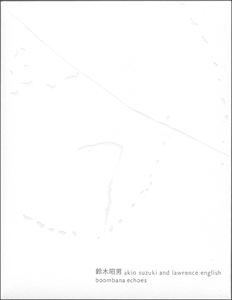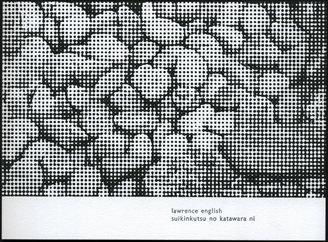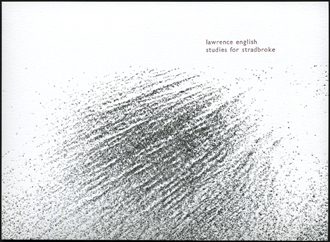 In a spate of recent releases, Room40 label head Lawrence English has produced three very different works on the always beautiful Winds Measure label, with some recorded as far back as a decade. While he utilizes field recordings from Japan and Australia on all three, each one sounds nothing like the other but all are indicative of the Australian artist’s ability at capturing and manipulating familiar sounds into something else entirely.
In a spate of recent releases, Room40 label head Lawrence English has produced three very different works on the always beautiful Winds Measure label, with some recorded as far back as a decade. While he utilizes field recordings from Japan and Australia on all three, each one sounds nothing like the other but all are indicative of the Australian artist’s ability at capturing and manipulating familiar sounds into something else entirely.
Boombana Echoes, a collaboration with Japanese artist Akio Suzuki recorded in 2005, the emphasis is definitely more on instrumentation, both traditional and electronic.Suzuki performs on the Analapos, an instrument of his own creation that consists of two metal cylinders connected with a coil spring."Manorina Melanophrys" showcases this instrument immediately with its scraping, resonating metallic sound, initially jarring and violent, but then becomingmuch more calm, with almost rhythms and light, ethereal electronics finishing the work out.
"Ficus Watkinsiana" stays a bit more dissonant, with a disconcerting voice echoing around immediately setting a darker sensibility.Soon an oddly bent/shaped melody, which almost sounds like a sampled cat meow constructs some semblance of a melody amidst the heavy use of reverb and echo, before ending with a thin percussive blast from English.

Suikinkutsu No Katawara Ni is a collection of traditional field recordings from English.Recorded between 2003 and 2011, he captures various locations in both Japan and Australia extremely effectively, at times being easily identifiable sources, and other times not at all.A consistent sound that appears throughout a number of the pieces here, especially "Taima Bells" and "Slowly Turns Blue" is a wet, metallic pinging sound likely of dripping water.The former has a rapid, almost frenetic pace to it, while the latter has a calmer, more meditative pacing to it.
The plinking sound appears as a more subtle counterpoint on other pieces, such as the winds and distant birdsongs of "Bamboo Shinjuku" and the dense cicada calls and organic sounds that punctuate "Minor Lori Swings".The resonating metallic hollowness that is "Chamber" is perhaps the most different piece here: the endless reverberations of what sounds like a recording from a metal tank dominating the sound while birds can be heard far in the distance.

Studies for Stradbroke sees English recording material closer to home, namely via hydrophone on Stradbroke Island in both January and August of 2007, reflecting the two seasonal extremes.The opening and closing versions of "Slide" are the most boisterous of these eight recordings, sounding like wide expanses of silence interrupted by what could be a sped up and slowed down tape of white noise, but most likely not.
Between these two conceptual bookends are a variety of hushed, slight recordings that capture the various textures from under the water."Reeds of Brown Lake," for example, uses the subtle vibrations captured, likely ripples and waves in the water, to build an almost heartbeat like thump that adds a great sense of tension to an otherwise understated piece.
The strongest works here are the ones that present fascinating, but unidentifiable textures and natural rhythms.This is at its most obvious on the quiet clattering that almost sounds like wooden objects on "Intercepted Communications" and the brittle, yet submerged crackles of "Rock Walls," which is occasionally punctuated with a bird call or other natural interruption.In other moments they are used infrequently and amidst long passages of silence, such as on the occasional sloshing of "Slipping Grains."
All three of these releases stand strongly on their own, but I must say my personal preference leans towards Studies for Stradbroke.Even amidst its limited source material, Lawrence English captures a sonic microcosm of low frequency pulses and wet, crackling sounds that are far from being easily identified.Boombana Echoes is also notable for its significantly different approach, using more traditional techniques to create a very unique, almost musical EP of sound art.Suikinkutsu No Katawara Ni is not bad by any means, but its traditionalist approach to field recordings causes it to stand out less next to these other two very diverse works.
samples:
 
 
Read More

